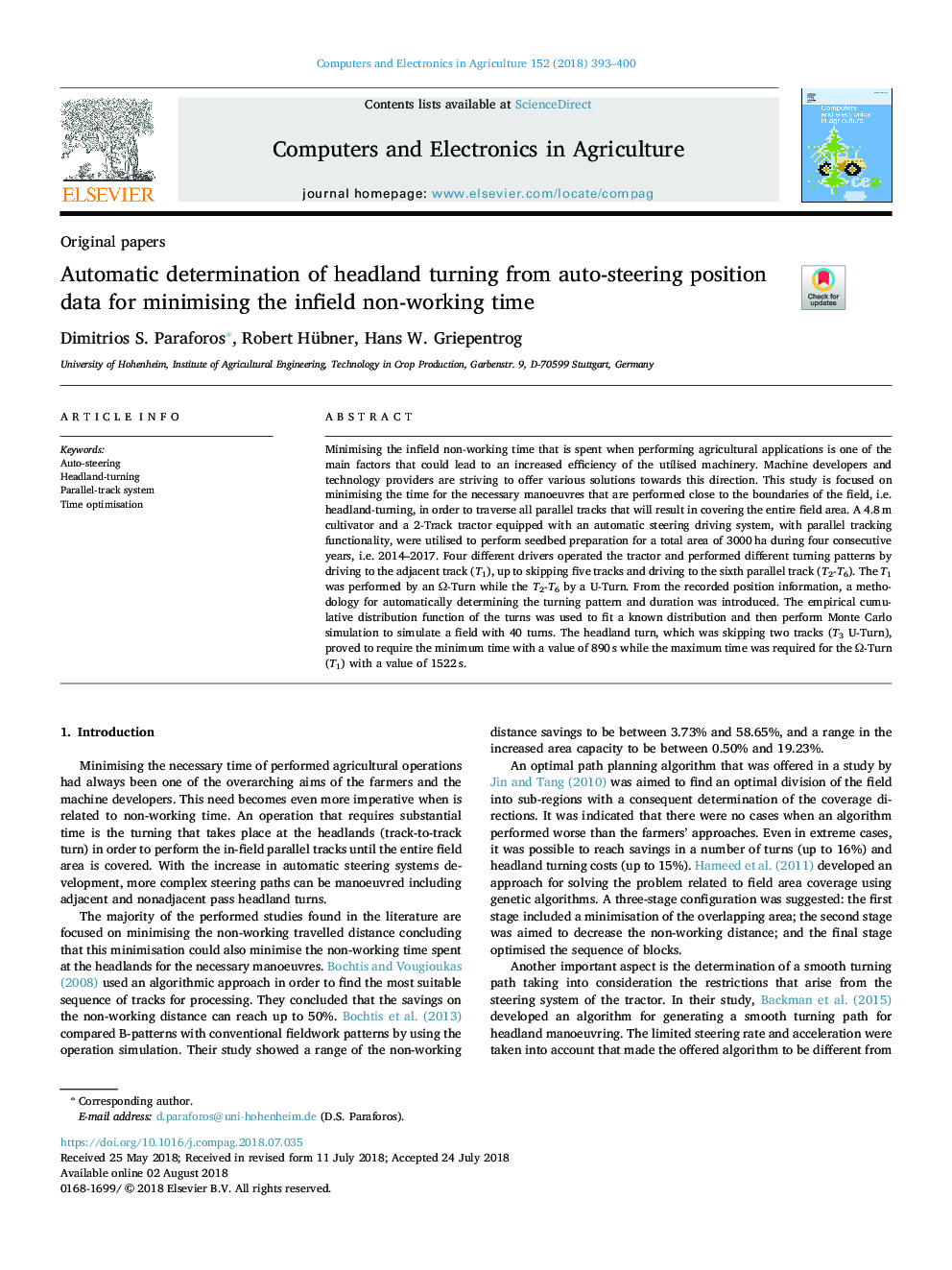| Article ID | Journal | Published Year | Pages | File Type |
|---|---|---|---|---|
| 6539311 | Computers and Electronics in Agriculture | 2018 | 8 Pages |
Abstract
Minimising the infield non-working time that is spent when performing agricultural applications is one of the main factors that could lead to an increased efficiency of the utilised machinery. Machine developers and technology providers are striving to offer various solutions towards this direction. This study is focused on minimising the time for the necessary manoeuvres that are performed close to the boundaries of the field, i.e. headland-turning, in order to traverse all parallel tracks that will result in covering the entire field area. A 4.8â¯m cultivator and a 2-Track tractor equipped with an automatic steering driving system, with parallel tracking functionality, were utilised to perform seedbed preparation for a total area of 3000â¯ha during four consecutive years, i.e. 2014-2017. Four different drivers operated the tractor and performed different turning patterns by driving to the adjacent track (T1), up to skipping five tracks and driving to the sixth parallel track (T2-T6). The T1 was performed by an Ω-Turn while the T2-T6 by a U-Turn. From the recorded position information, a methodology for automatically determining the turning pattern and duration was introduced. The empirical cumulative distribution function of the turns was used to fit a known distribution and then perform Monte Carlo simulation to simulate a field with 40 turns. The headland turn, which was skipping two tracks (T3 U-Turn), proved to require the minimum time with a value of 890â¯s while the maximum time was required for the Ω-Turn (T1) with a value of 1522â¯s.
Related Topics
Physical Sciences and Engineering
Computer Science
Computer Science Applications
Authors
Dimitrios S. Paraforos, Robert Hübner, Hans W. Griepentrog,
